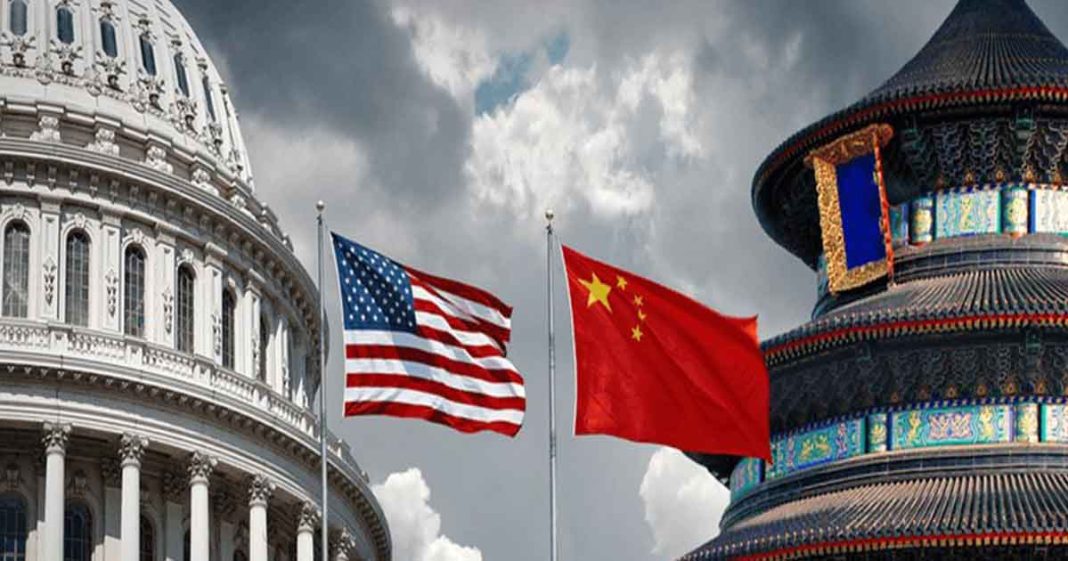
Dynamics of US-China rivalry in Middle East By Ghulam Muhammad
The rivalry between two major powers is not just limited to two states but it creates chaos all around the globe. Also, it makes complex situations for different actors to decide in the favor of one and must antagonize the other one ultimately. This is the same case in the Middle Eastern region where we can see that US security relationships are increasingly at odds with Chinese Economic relations with different states of the Middle East.
China does a lot of business in the region; it imports over 40% of its crude from the Gulf producers and has identified MENA as an important hub in the Belt and Road Initiative. Activities might pose a risk to US Defense technology so it can make the Gulf States insecure about their interests.
Monetary Domain China has employed the Asian Development Bank (ADB) which has become a rival to the World Bank (WB) and the International Monetary Fund (IMF), which are both controlled by the United States initially. The loans from ADB are relative to lower interests and can help the infrastructural building of Middle Eastern states and can be a remedy to over-burdened policies of the IMF and to tilt towards the East for trade and commerce instead of the west.
However, this situation leads to Military clout v/s Economic clout in the resourceful region of the world i.e, the Middle East among the two major powers of the World i.e, the US and China respectively. Chinese investments in the Middle East and North Africa collectively reached $197 billion during the period from 2005 to 2020. Meanwhile, trade exchange between China and regional countries hit $151 billion in 2020. This led Washington to pressure some regional countries to end China’s technological clout, in what seemed to be a technological cold war, as we have seen in the trade war between US and China which also affected the Middle Eastern region.
Technological and Health Domain Moreover, the development of 6G by China will make Gulf States oscillate between military options of the US and technological or digitalized economy options of China. Beijing’s leading role in Artificial Intelligence and advancement in technology has to expand its influence in the Middle East region. Iran and China’s bilateral relations escalated after the CSP agreement where Iran will become a full member state of SCO (Shanghai Cooperation Organization) at the next summit. Since 2014, China has been grooming Dubai as a major clearing house for RMB.
As the leading financial center of the Middle East, Beijing has aligned its interests with the UAE. However, UAE tries to balance its relations according to Abraham Accords also, as it struck a deal to buy the F-35. Chinese Foreign Minister Wang went to Abu Dhabi where an agreement was signed to manufacture and distribute HayatVax, a Sinopharm COVID vaccine. Many believed the Abraham Accords would put a halt on the Sino-Emirati relationship, but the news that China was investing more falsified all perceptions.
Economic Domain
China’s Belt and Road initiative can help the Middle Eastern region as their gateway, connecting Asia with Europe and then further. The gateway is always considered the most profitable area because you lend a way based on your interests. The gateway area will help Middle Eastern states such as Iran, Iraq, and Yemen which are not economically sound, to build up their economy by making their resources worthy.
This will not only help to alleviate their economic crisis but also end the political crisis and lead to domestic prosperity in the region and move towards strengthening the region. Regional countries can accrue diverse benefits from both major powers. The regional states can create good relations with both poles of the globe. China is advancing its technological level (providing 5G), making contributions to establishing good infrastructure and renewable energy projects (both solar and nuclear) exponentially at a very low price.
Moreover, the best thing about China is also that it is not posing a biased position in resolving disputes among the regional states like between Saudi Arabia and Iran and is also quite neutral in the Palestine-Israel conflict. Moreover, we have seen that regional countries are quite attracted to China’s economic initiatives like the Belt and Road initiative to get the most benefit.
Also, China had attempted to counter the US ‘heading eastward’ by its political movement ‘heading westward’. China’s Middle East approach hinges on the use of bilateral diplomacy and bilateral partnerships with existing US allies in the region to increase regional competition over influence and resources, while at the same time China doesn’t want to confront the USA directly.
Dynamics of US-China rivalry in Middle East By Ghulam Muhammad
Source: https://www.globalvillagespace.com/dynamics-of-us-china-rivalry-in-middle-east/

